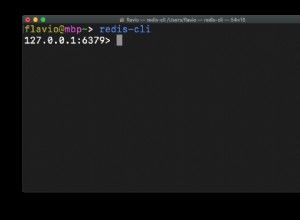Druga odpowiedź sugeruje utworzenie nowej instancji StitchClient co jest czymś, co MongoDB wyraźnie odradza w Oficjalna dokumentacja API
- i nie bez powodu, ponieważ istnieje w tym celu metoda fabryczna. Tak więc (po zainstalowaniu mongodb-stitch ), poniższy kod pomoże Ci rozpocząć pracę w component.ts
import { Component, OnInit } from "@angular/core";
import { StitchClientFactory } from "mongodb-stitch";
let appId = 'authapp-****';
@Component({
selector: "app-mongo-auth",
templateUrl: "./mongo-auth.component.html",
styleUrls: ["./mongo-auth.component.css"]
})
export class MongoAuthComponent implements OnInit {
mClient;
ngOnInit() {
this.mClient = StitchClientFactory.create(appId);
}
Możesz go następnie użyć do dowolnego celu, na przykład do implementacji logowania przez Google
gLogin(){
this.mClient.then(stitchClient => {
stitchClient.authenticate("google");
})




